Board integrates BI, planning, and analytics in one platform, helping enterprises streamline data-driven decision making across departments.
If you’re drowning in spreadsheets, struggling to visualize your company’s performance, or finding it challenging to make strategic decisions based on scattered information, you’re not alone. Many organizations face these exact challenges, which is why integrated business intelligence and planning solutions have become essential for modern enterprises. One platform that’s making waves in this space is Board.
Introduction to Board
What is Board and its Purpose?
Board is a comprehensive intelligent planning platform that combines Business Intelligence (BI), Corporate Performance Management (CPM), and Predictive Analytics into a unified solution. Unlike traditional tools that serve single functions, Board offers an all-in-one approach to data analysis, planning, and forecasting.
At its core, Board aims to empower organizations with a single platform where they can analyze, simulate, plan, and implement strategies with confidence. The platform transforms data from various sources into interactive dashboards, reports, and forecasting models, enabling users to make data-driven decisions without jumping between multiple systems.
Board’s purpose extends beyond mere data visualization—it’s designed to create a decision-making ecosystem where information flows seamlessly between departments, breaking down silos and fostering collaboration.
Who is Board Designed For?
Board caters primarily to mid-sized and large enterprises looking to optimize their planning and analytics processes. The platform serves a variety of roles and industries:
By Role:
- C-Suite Executives who need high-level overviews and strategic insights
- Finance Teams managing budgeting, planning, and forecasting
- Sales and Marketing departments tracking performance metrics and campaign effectiveness
- Supply Chain managers optimizing inventory and logistics
- HR professionals monitoring workforce analytics and planning
By Industry:
- Manufacturing companies managing complex supply chains
- Retail businesses balancing inventory and sales forecasting
- Financial services firms handling detailed financial planning
- Healthcare organizations optimizing patient care and resources
- Consumer packaged goods companies managing product performance
Board is particularly valuable for organizations with complex planning needs, those seeking to integrate cross-departmental data, and businesses wanting to move away from siloed, spreadsheet-based planning toward a more integrated approach.
Getting Started with Board: How to Use It
Getting up and running with Board involves several key steps:
- Implementation: Board can be deployed either on-premises or in the cloud, depending on your organization’s requirements and IT infrastructure. Many companies opt for the cloud-based solution for greater flexibility and reduced maintenance.
- Data Integration: The first technical step is connecting Board to your existing data sources. The platform supports integration with various ERP systems, databases, CRM platforms, and other business applications.
- Building Your Data Model: Working with Board consultants or your internal team, you’ll define how data is structured within the platform. This involves creating dimensions, hierarchies, and measures that reflect your business reality.
- Designing Applications: Once your data model is established, you can begin creating specific applications for different business functions—sales analysis, financial planning, HR management, etc.
- Training: Board offers training resources to help users become familiar with the platform. This ranges from basic navigation to advanced modeling techniques.
- Gradual Expansion: Most organizations start with one business area (often finance) and gradually expand Board usage to other departments as users become comfortable with the platform.
The learning curve can be steeper than with simpler BI tools, but Board’s unified approach means you’re building an integrated system rather than patching together multiple solutions.
Board’s Key Features and Benefits
Core Functionalities of Board
Board’s platform offers a comprehensive suite of functionalities designed to support the entire decision-making process:
1. Data Analysis and Visualization
- Interactive dashboards with drill-down capabilities
- Custom reporting with dynamic charts and graphs
- Ad-hoc querying for on-the-fly analysis
- Self-service data discovery tools
2. Planning and Forecasting
- Financial budgeting and planning
- Sales and demand forecasting
- Workforce planning
- Scenario modeling and what-if analysis
3. Predictive Analytics
- Statistical algorithms for trend analysis
- Machine learning capabilities
- Predictive models for forecasting
- Anomaly detection
4. Unified Data Management
- Centralized data repository
- Multi-dimensional data modeling
- ETL (Extract, Transform, Load) capabilities
- Data governance tools
5. Workflow and Collaboration
- Process management tools
- Task assignment and tracking
- Comment and annotation features
- Version control for planning cycles
Advantages of Using Board
Board offers several distinct advantages that set it apart from traditional BI and planning tools:
🔄 Unified Platform: Perhaps Board’s greatest strength is its ability to combine BI, CPM, and analytics in a single platform, eliminating the need to switch between multiple tools and reducing data inconsistencies.
⚡ Speed to Insight: The integrated nature of Board means less time spent on data transfers and reconciliation, allowing users to move from data to decisions more quickly.
🔧 Flexibility: Board’s programming-free approach allows business users to create and modify applications without extensive IT support, making it adaptable to changing business needs.
🧩 Custom Applications: Organizations can build tailored applications specific to their industry requirements rather than forcing their processes to fit within pre-defined software constraints.
📊 Single Version of Truth: By maintaining data in a centralized platform, Board helps ensure consistency in reporting and planning across departments.
📈 Improved Forecasting Accuracy: The combination of historical analysis and advanced predictive modeling contributes to more accurate forecasts and better decision-making.
Main Use Cases and Applications
Board’s versatility makes it suitable for numerous business applications:
Financial Planning & Analysis
- Annual budgeting and rolling forecasts
- Profit and loss management
- Cash flow planning
- Financial consolidation
Sales Performance Management
- Sales forecasting and pipeline analysis
- Territory and quota planning
- Commission calculations
- Customer profitability analysis
Supply Chain Optimization
- Demand planning
- Inventory optimization
- Production planning
- Logistics management
Human Resources
- Headcount planning
- Compensation analysis
- Workforce optimization
- Talent management metrics
Marketing Performance
- Marketing budget allocation
- Campaign performance tracking
- ROI analysis
- Market share modeling
Executive Dashboarding
- KPI monitoring
- Strategic initiative tracking
- Corporate performance overviews
- Competitive benchmarking
Exploring Board’s Platform and Interface
User Interface and User Experience
Board’s interface strikes a balance between powerful functionality and user accessibility. The platform features:
Dashboard Environment: The main working area presents visualizations, tables, and interactive elements in a customizable layout. Users can arrange components to create information-rich views tailored to specific roles or tasks.
Ribbon Menu System: Similar to Microsoft Office applications, Board utilizes a ribbon menu that categorizes functions and tools, making them easily accessible while maintaining a clean interface.
Data Explorer: This component allows users to navigate through the multi-dimensional data model, selecting dimensions and measures for analysis without needing to write queries.
Capsule Design: Board’s application design follows a “capsule” concept, where related functions are grouped into self-contained modules that can be interconnected as needed.
Responsive Design: The interface adapts to different screen sizes and devices, though the full functionality is best experienced on desktop or laptop computers.
The user experience is generally positive for business professionals familiar with analytics tools, though new users may experience a learning curve due to the platform’s comprehensive nature. Once familiar with the environment, users typically appreciate the logical organization and consistent interface patterns across different applications.
Platform Accessibility
Board offers multiple ways to access and interact with the platform:
Deployment Options:
- Cloud-based SaaS solution (Board Cloud)
- On-premises installation
- Private cloud deployment
Device Compatibility:
- Desktop application for Windows
- Web browser access
- Mobile applications for iOS and Android (with limited functionality compared to desktop)
Integration Capabilities:
- REST API for custom integrations
- Pre-built connectors for common business systems (SAP, Oracle, Salesforce, etc.)
- Microsoft Office integration for Excel and PowerPoint
- Export functionality to PDF and other formats
Language Support:
The platform supports multiple languages both for the interface and for data handling, making it suitable for international organizations.
Accessibility Features:
While Board has made strides in improving accessibility, this remains an area where some users report limitations compared to consumer-grade applications.
Board Pricing and Plans
Subscription Options
Board operates on a subscription model with pricing typically structured according to several factors:
User Types:
- Full Users (with complete access to all features)
- Application Users (with access to specific pre-built applications)
- Viewer Users (with read-only access to reports and dashboards)
Deployment Method:
- Cloud subscriptions (typically per-user, per-month)
- On-premises licenses (often with perpetual licensing options plus annual maintenance)
Organization Size:
- Enterprise plans for large organizations
- Department-specific implementations for targeted use cases
While Board doesn’t publish standard pricing on their website, industry sources suggest that pricing starts from approximately $1,000 per user per year for full licenses, with volume discounts available for larger implementations.
Most Board implementations are enterprise-scale projects that include not just software licensing but also implementation services, training, and ongoing support. These comprehensive projects typically start from $100,000 for mid-sized implementations and can reach seven figures for large enterprise deployments.
Free vs. Paid Features
Board doesn’t offer a permanent free tier or free version of their platform. However, they do provide several options for evaluating the software before purchase:
Evaluation Options:
- Personalized demos tailored to your industry and use cases
- Proof of concept projects for qualified prospects
- Trial periods negotiated as part of the sales process
Unlike some competitors who offer limited functionality versions for small businesses or individual users, Board is positioned as an enterprise solution with corresponding pricing and packaging.
Board Reviews and User Feedback
Pros and Cons of Board
Based on aggregated user reviews and industry analyst reports, here’s a balanced view of Board’s strengths and limitations:
Pros:
- ✅ Unified platform eliminating the need for multiple tools
- ✅ Powerful modeling capabilities for complex business scenarios
- ✅ Flexibility to create custom applications without programming
- ✅ Strong in-memory processing for handling large datasets
- ✅ Robust planning functionality compared to pure BI tools
- ✅ Good balance between IT governance and business user self-service
Cons:
- ❌ Steeper learning curve than some competing products
- ❌ Implementation can be time-consuming and resource-intensive
- ❌ Higher cost compared to standalone BI or planning tools
- ❌ Mobile experience not as robust as desktop
- ❌ Some users report challenges with the documentation
- ❌ May require more technical expertise for advanced customizations
User Testimonials and Opinions
Here’s what actual users are saying about Board based on public reviews and testimonials:
“We’ve been able to reduce our annual budgeting cycle by 30% since implementing Board. Having everything in one platform means we’re no longer reconciling numbers between systems.” – Finance Director, Manufacturing Industry
“The learning curve was steep at first, but once our team became familiar with the platform, we found it incredibly powerful. We’ve replaced at least three separate tools with Board.” – Business Intelligence Manager, Retail
“Board’s what-if scenario planning has been invaluable for our executive team, especially during market uncertainties. Being able to model different outcomes in real-time during meetings has transformed our strategic planning.” – CFO, Healthcare Organization
“Implementation took longer than we expected, but the results have been worth it. My advice would be to start with a clearly defined scope and expand gradually.” – IT Director, Financial Services
Industry analysts generally place Board in the category of specialized planning platforms with strong BI capabilities, noting its particular strength in financial planning and analysis use cases.
Board Company and Background Information
About the Company Behind Board
Board was founded in 1994 by Giovanni Grossi in Lugano, Switzerland, where the company still maintains its headquarters. What began as a specialized business intelligence tool has evolved into an integrated platform for analytics, planning, and predictive modeling.
Company Facts:
- Founded: 1994
- Headquarters: Lugano, Switzerland
- Global offices: Located across Europe, North America, Asia Pacific, and Latin America
- Employees: 500+ worldwide
- Customer base: 3,000+ customers globally
Leadership:
Board is led by a team of experienced executives with backgrounds in enterprise software, analytics, and corporate performance management. The leadership team has maintained a consistent vision of unified decision-making while expanding the platform’s capabilities.
Growth and Investment:
In 2019, Board received significant investment from Nordic Capital, a private equity firm, to accelerate product development and international expansion. This has resulted in increased market presence, particularly in North American markets where the company has been growing rapidly.
Industry Recognition:
- Recognized in Gartner Magic Quadrant reports for Financial Planning Software and Analytics Platforms
- Featured in Dresner Advisory market studies for Enterprise Planning
- Received various industry awards for innovation in business intelligence and corporate performance management
Board serves clients across diverse industries, with particular strength in manufacturing, retail, financial services, and consumer packaged goods. Their client roster includes organizations like KPMG, Coca-Cola European Partners, Puma, and HSBC, among many others.
Board Alternatives and Competitors
Top Board Alternatives in the Market
If you’re evaluating Board, you might also want to consider these alternatives that offer similar functionality:
1. Anaplan
- Strong in connected planning
- Excel-like interface with powerful cloud-based processing
- Popular for finance and sales planning use cases
- Comprehensive suite for enterprise performance management
- Tight integration with Oracle’s broader ecosystem
- Strong in financial consolidation and reporting
- Powerful TM1 engine for complex calculations
- Excel integration through Planning Analytics for Excel
- Strong in scenario modeling and variance analysis
- Combines BI, planning, and predictive analytics
- Natural fit for organizations using other SAP products
- Emphasis on machine learning and augmented analytics
5. Jedox
- Excel-based interface with enterprise capabilities
- Strong in financial planning and budgeting
- Offers both cloud and on-premises deployments
- User-friendly interface with shorter implementation time
- Strong in financial planning and workforce planning
- Cloud-native architecture
Board vs. Competitors: A Comparative Analysis
| Feature | Board | Anaplan | Oracle EPM | SAP Analytics Cloud | Workday Adaptive |
|---|---|---|---|---|---|
| Unified Platform | ★★★★★ | ★★★★☆ | ★★★☆☆ | ★★★★☆ | ★★★☆☆ |
| Ease of Use | ★★★☆☆ | ★★★☆☆ | ★★☆☆☆ | ★★★☆☆ | ★★★★☆ |
| Implementation Speed | ★★★☆☆ | ★★★☆☆ | ★★☆☆☆ | ★★★☆☆ | ★★★★☆ |
| Financial Planning | ★★★★★ | ★★★★☆ | ★★★★★ | ★★★★☆ | ★★★★☆ |
| Sales Planning | ★★★★☆ | ★★★★★ | ★★★☆☆ | ★★★☆☆ | ★★★☆☆ |
| Supply Chain Planning | ★★★★☆ | ★★★★☆ | ★★★☆☆ | ★★★☆☆ | ★★☆☆☆ |
| Data Visualization | ★★★★☆ | ★★★☆☆ | ★★★☆☆ | ★★★★☆ | ★★★☆☆ |
| Predictive Analytics | ★★★★☆ | ★★★☆☆ | ★★★☆☆ | ★★★★☆ | ★★☆☆☆ |
| Enterprise Scalability | ★★★★☆ | ★★★★★ | ★★★★★ | ★★★★★ | ★★★☆☆ |
| Cloud Capabilities | ★★★★☆ | ★★★★★ | ★★★★☆ | ★★★★★ | ★★★★★ |
Key Differentiators:
- Board stands out for its truly unified platform and strong balance between planning and analytics capabilities. It excels in custom application development without programming.
- Anaplan is known for its connected planning approach and flexible modeling capabilities. It’s often chosen for complex, cross-functional planning processes.
- Oracle EPM offers comprehensive financial management capabilities and is a natural choice for organizations heavily invested in the Oracle ecosystem.
- SAP Analytics Cloud provides strong integration with SAP’s business applications and has made significant strides in augmented analytics.
- Workday Adaptive Planning is recognized for ease of use and faster time to value, though it may have limitations for very complex enterprise requirements.
When choosing between Board and alternatives, organizations should consider their specific use cases, existing technology investments, user skill levels, and implementation resources.
Board Website Traffic and Analytics
Website Visit Over Time
Board’s website (board.com) has shown consistent traffic growth over recent years, reflecting increasing interest in integrated planning and analytics solutions. While exact figures aren’t publicly disclosed, industry analyses suggest:
- Monthly website visitors: Approximately 150,000-200,000
- Year-over-year growth: Estimated 15-20% increase
- Seasonal trends: Traffic peaks typically occur in Q4 and early Q1, aligning with annual budgeting cycles
Traffic saw notable increases following product releases and the strategic investment by Nordic Capital, indicating growing market awareness.
Geographical Distribution of Users
Board’s website traffic reflects its global market presence with notable regional variations:
Top Regions by Traffic:
- Europe (40-45%)
- With strong representation from Italy, UK, Germany, and Switzerland
- North America (30-35%)
- Primarily from the United States, with growing Canadian traffic
- Asia-Pacific (15-20%)
- Led by Australia, Japan, and Singapore
- Rest of World (5-10%)
- Including emerging markets in Latin America and Middle East
This distribution aligns with Board’s historical strength in European markets and its strategic expansion into North American and Asia-Pacific regions.
Main Traffic Sources
Board’s web traffic comes from diverse channels, indicating a multi-faceted marketing approach:
Traffic Source Breakdown:
- Organic Search (35-40%)
- Driven by planning, budgeting, and analytics-related keywords
- Direct Traffic (25-30%)
- Indicating strong brand recognition and returning visitors
- Referral Traffic (15-20%)
- From industry publications, partner websites, and technology review platforms
- Social Media (5-10%)
- Primarily LinkedIn, with limited traffic from other platforms
- Paid Search and Display (10-15%)
- Targeted campaigns focused on enterprise decision-makers
The relatively high proportion of organic and direct traffic suggests Board has established solid brand awareness within its target market segments.
Frequently Asked Questions about Board (FAQs)
General Questions about Board
Q: What exactly is Board, and how is it different from other BI tools?
A: Board is an all-in-one decision-making platform that combines business intelligence, planning, and predictive analytics in a unified environment. Unlike traditional BI tools that focus primarily on reporting and visualization, Board integrates the full spectrum of performance management capabilities, allowing organizations to not just analyze data but also plan, forecast, and model future scenarios in the same platform.
Q: How long does it typically take to implement Board?
A: Implementation timelines vary based on scope, complexity, and organizational readiness. Small departmental implementations can be completed in 2-3 months, while enterprise-wide deployments typically range from 6-12 months. Board recommends a phased approach, starting with a specific business area and expanding gradually.
Q: Is Board suitable for small businesses?
A: Board is primarily designed for mid-sized to large enterprises with complex planning and analysis needs. Small businesses typically find the investment and implementation requirements disproportionate to their needs, though growing businesses with sophisticated planning requirements might find value in department-specific implementations.
Feature Specific Questions
Q: Can Board connect to our existing data sources?
A: Yes, Board offers numerous data connectors for databases (SQL Server, Oracle, etc.), ERP systems (SAP, Oracle, etc.), cloud applications (Salesforce, etc.), and flat files (Excel, CSV). It also provides API connectivity for custom integrations and supports both direct database connections and ETL processes.
Q: Does Board require programming knowledge to create applications?
A: Board’s core philosophy is “programming-free” application development. Business users can create sophisticated applications using point-and-click interfaces and drag-and-drop functionality. That said, more complex implementations may benefit from specialized knowledge of Board’s toolkit, which is why many organizations work with certified Board consultants for initial setup.
Q: Can Board handle large volumes of data?
A: Yes, Board utilizes an in-memory data processing engine optimized for analytical workloads. Enterprise implementations regularly handle hundreds of millions of data points. For extremely large datasets, Board supports data partitioning strategies and aggregate-level analysis with drill-down capabilities.
Pricing and Subscription FAQs
Q: How is Board licensed?
A: Board offers several licensing models, including named user subscriptions, concurrent user licenses, and in some cases, server-based licensing. Cloud deployments typically follow a subscription model (annual or multi-year), while on-premises deployments may offer perpetual licensing options with annual maintenance fees.
Q: Is there a trial version available?
A: Board doesn’t offer a standard self-service trial version due to the enterprise nature of the platform. However, they provide demonstrations, proof-of-concept projects, and sandbox environments for serious prospective customers evaluating the platform.
Q: What’s included in the subscription cost?
A: Typical subscriptions include software licensing, standard support, and access to updates and upgrades. Implementation services, training, custom application development, and premium support are usually contracted separately, either directly with Board or through certified implementation partners.
Support and Help FAQs
Q: What training options are available for Board users?
A: Board offers various training options including:
- Standardized classroom training (virtual or in-person)
- Custom onsite training for specific teams
- Self-paced online learning through the Board Academy
- Documentation and knowledge base access
- Annual user conferences and regional events
Q: How does technical support work?
A: Board provides tiered support options, typically including:
- Standard support: Business hours coverage with defined response times
- Premium support: Extended hours with faster response guarantees
- Enterprise support: 24/7 coverage for mission-critical applications
Support is delivered through a ticket system, with options for phone and web conference assistance for urgent issues.
Q: Can we customize Board ourselves after implementation?
A: Yes, Board is designed to be maintained and extended by business users once the initial setup is complete. Most organizations train power users who can create new reports, dashboards, and planning models. More substantial changes to the data model or complex new applications might still require specialized expertise.
Conclusion: Is Board Worth It?
Summary of Board’s Strengths and Weaknesses
After a thorough examination of Board’s capabilities, here’s a balanced assessment of its key strengths and limitations:
Key Strengths:
- Truly unified platform for analytics, planning, and forecasting
- Flexibility to create custom applications without programming
- Powerful data modeling capabilities for complex business scenarios
- Strong performance for financial planning and analysis
- Ability to create organization-specific solutions versus one-size-fits-all
- Robust security and governance features for enterprise requirements
Main Limitations:
- Higher initial investment compared to point solutions
- Steeper learning curve than consumer-grade BI tools
- Implementation requires significant time and resource commitment
- Can be excessive for organizations with simple planning needs
- Mobile experience doesn’t match desktop functionality
- May require specialized expertise for optimal configuration
Final Recommendation and Verdict
Board represents a significant investment but delivers substantial value for organizations with complex planning and analytics requirements. It’s particularly well-suited for:
- Mid-sized to large enterprises seeking to consolidate multiple planning and BI tools
- Organizations with sophisticated financial planning processes
- Companies wanting to break down silos between financial and operational planning
- Businesses that value custom applications tailored to their specific processes
- Teams that need to combine historical analysis with forward-looking planning
The platform may be less appropriate for:
- Small businesses with limited analytics needs
- Organizations seeking quick, out-of-the-box implementation
- Companies primarily focused on data visualization rather than planning
- Teams with limited budget for implementation and training
Final Verdict: 4.3/5 stars
Board earns a strong recommendation for enterprises seeking a comprehensive decision-making platform, particularly those focused on integrated planning. While the investment is significant in terms of both cost and implementation effort, organizations with complex planning requirements typically find strong ROI through process efficiency, improved forecast accuracy, and better-informed decision-making.
For maximum success, prospective users should plan for adequate implementation time, invest in proper training, and consider a phased approach that delivers value incrementally rather than attempting a “big bang” deployment across the entire organization.
If you’re serious about transforming how your organization handles planning and analytics, Board deserves a place on your evaluation shortlist. Just be prepared to commit the necessary resources to fully leverage its capabilities.
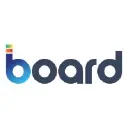
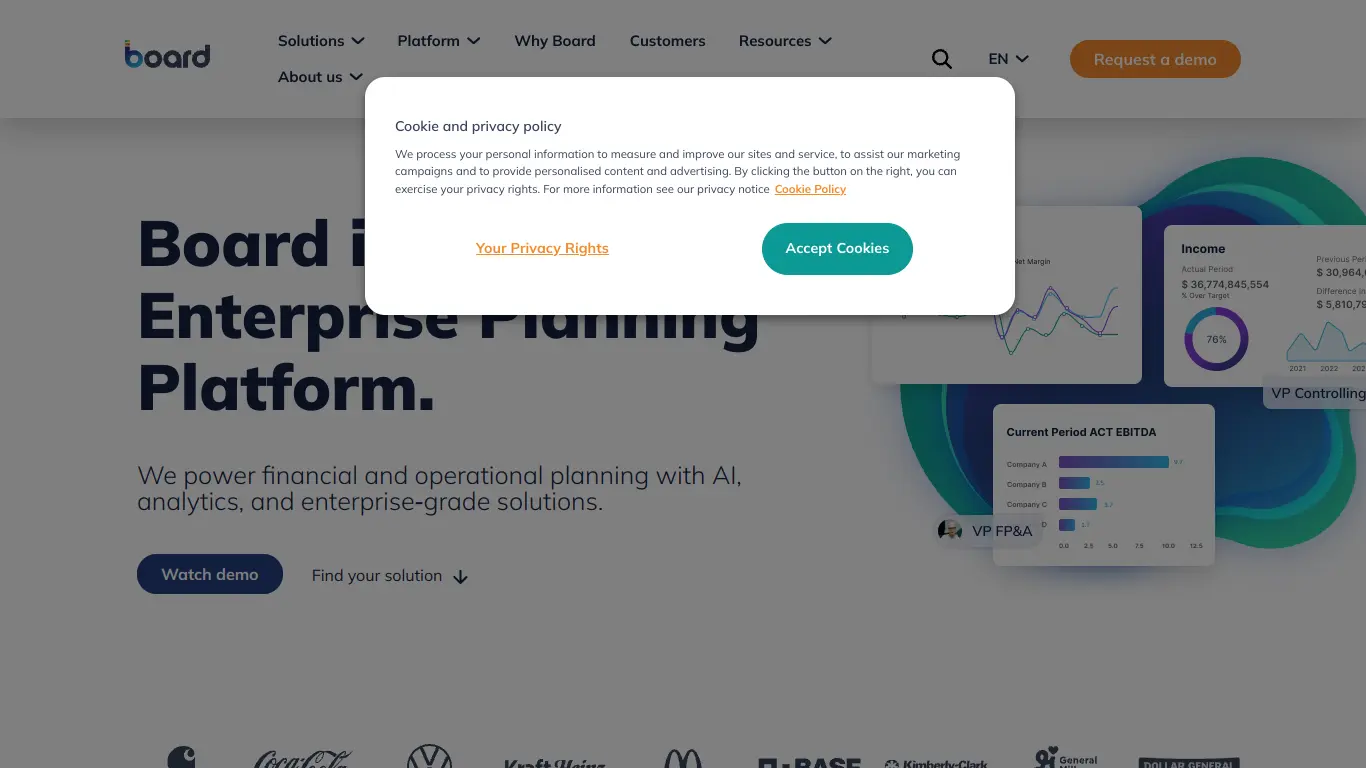








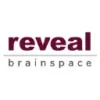






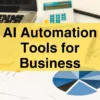



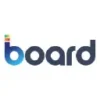
I am glad see so excelent post!